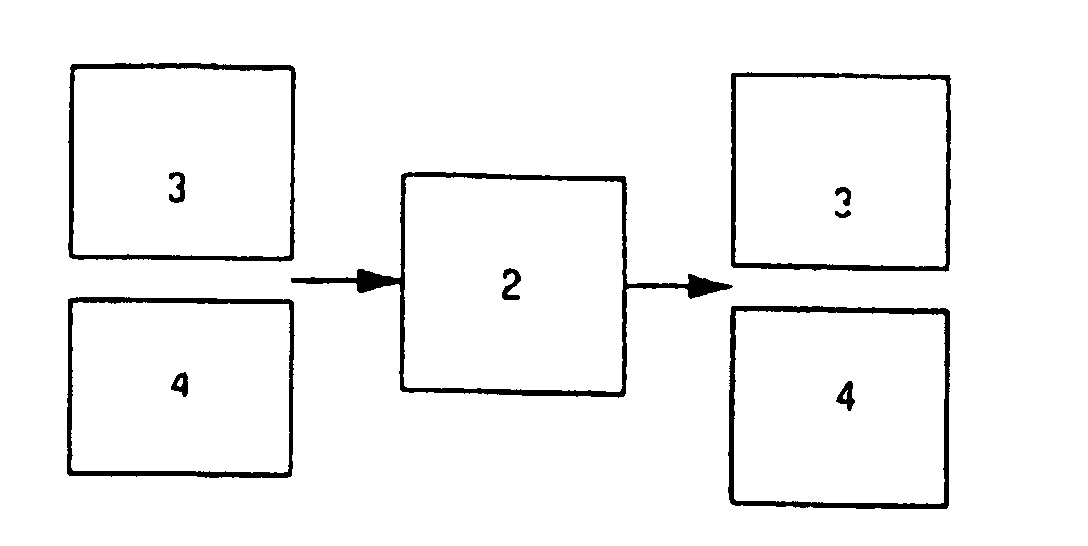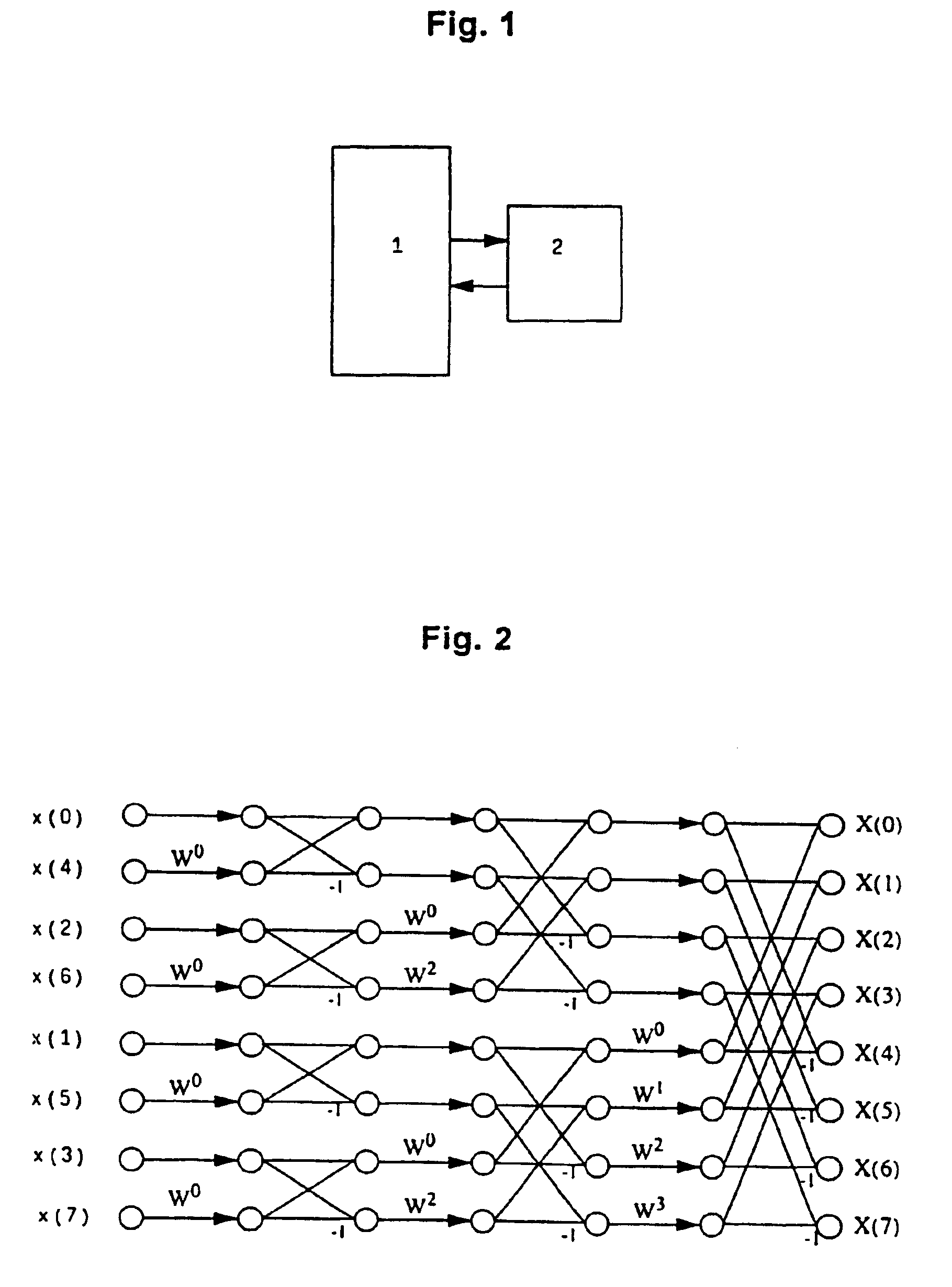Method and device for calculating a discrete orthogonal transformation such as FFT or IFFT
a discrete orthogonal transformation and method technology, applied in the field of methods and devices for calculating discrete orthogonal transformations such as fft or ifft, can solve the problems of plurality of clock cycles, complexity is primarily determined by the memory used, and change from one page to another takes significantly longer, so as to achieve fast calculation
- Summary
- Abstract
- Description
- Claims
- Application Information
AI Technical Summary
Benefits of technology
Problems solved by technology
Method used
Image
Examples
Embodiment Construction
[0036]FIG. 1 shows the aforementioned usual “in-place” calculation of an FFT, where a data pair is read from a memory 1, normally a DRAM, is logically combined in a Butterfly unit 2 and is written to the memory 1 again.
[0037]FIG. 2 shows the basic DIT algorithm for an FFT calculation for N=8. For calculation, the data items x(0) to x(7) need to be present in the memory in “bit-reversed” fashion at the start. The figure shows the signal flowchart for calculating the Fourier components X(0)-X(7). The algorithm and the signal flowchart are described in A. V. Oppenheim, R. W. Schafer: “Digital Signal Processing”, Prentice-Hall Inc., Englewood Cliffs, N.J., USA, 1975, pp. 285 ff., so that there is no need for this to be explained in more detail here. With regard to the nomenclature, the factors W0, W1 and W2 are also called twiddle factors.
[0038]FIG. 3 shows an FFT algorithm with an altered sequence of computation operations, the “Singleton algorithm”, which is described on page 301 of t...
PUM
 Login to View More
Login to View More Abstract
Description
Claims
Application Information
 Login to View More
Login to View More - R&D
- Intellectual Property
- Life Sciences
- Materials
- Tech Scout
- Unparalleled Data Quality
- Higher Quality Content
- 60% Fewer Hallucinations
Browse by: Latest US Patents, China's latest patents, Technical Efficacy Thesaurus, Application Domain, Technology Topic, Popular Technical Reports.
© 2025 PatSnap. All rights reserved.Legal|Privacy policy|Modern Slavery Act Transparency Statement|Sitemap|About US| Contact US: help@patsnap.com



